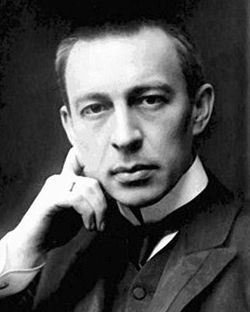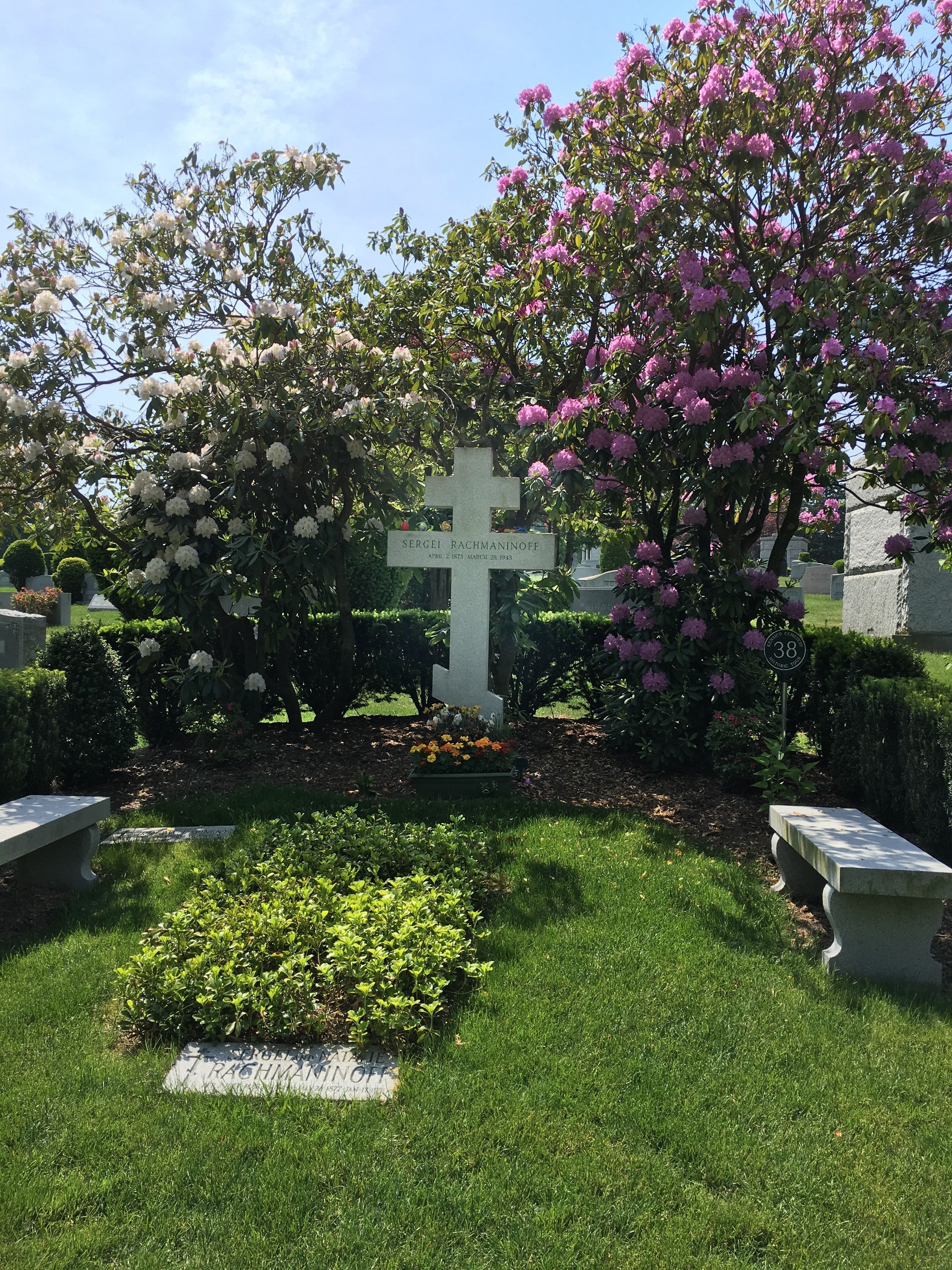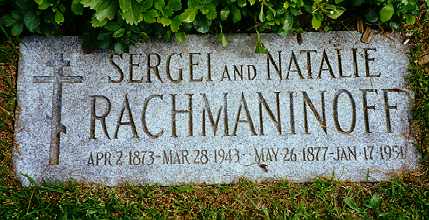Composer, Pianist and Orchestra Conductor. He is best remembered for his piano works, including four concertos, his popular "Prelude in C Sharp Minor" and the "Rhapsody on a Theme of Paganini" for piano and orchestra. Born in Nizhni Novgorod, Russia, he studied music at St. Petersburg and Moscow, where he won the gold medal for composition. In 1917 he fled the Russian Revolution, and ended up in the United States. An early convert to the composer Pyotr Tchaikovsky, he attended Tchaikovsky's performances, which included the early Rachmaninoff work, "The Rock," as Tchaikovsky had recognized Rachmaninoff as an musical genius. When Tchaikovsky died, Rachmaninoff wrote "Elegiac Trio" in his memory. When his "Symphony No. 1 in D Minor" at a 1896 concert ended with bad reviews, he stopped writing for the next three years, only picking up the pen again after a happy marriage to his cousin, Natalya Satina. His most popular concerto for piano and orchestra is probably "Piano Concerto No. 2." For his first American concert tour, in 1909, he wrote the "Third Piano Concerto," which eventually received public acclaim, although it was slow to come, and some initial reviews were harsh. (It was the basis of the film "Shine.") When the Russian Revolution came in 1917, he left Russia for good, moving to the United States, where he continued to compose. His "Variations of a Theme of Corelli," composed in 1931, was based on the popular Baroque dance theme of La Follia. His "Rhapsody on a Theme of Paganini," from the mid-1930s, is a masterwork, especially beautiful and harmonic, yet somewhat avant-garde for Rachmaninoff, and has been used in many film scores, including "Somewhere in Time" (1980). Excerpts of his other works have been heard in many other movies and television shows. Much of Rachmaninoff's work shows a careful reuse and transformation of thematic material, which characterizes his later works as well. For example, his "First Piano Sonata" (1907), was inspired by Goethe's "Faust," and its three movements are said to portray Faust, Margareta, and Mephistopheles, in that order, which in turn intermix and contrast the doubt and certainty that reflected the struggle for the mind and soul of Faust. Rachmaninoff kept a villa in Switzerland, but died in Beverly Hills, California, in 1943.
Composer, Pianist and Orchestra Conductor. He is best remembered for his piano works, including four concertos, his popular "Prelude in C Sharp Minor" and the "Rhapsody on a Theme of Paganini" for piano and orchestra. Born in Nizhni Novgorod, Russia, he studied music at St. Petersburg and Moscow, where he won the gold medal for composition. In 1917 he fled the Russian Revolution, and ended up in the United States. An early convert to the composer Pyotr Tchaikovsky, he attended Tchaikovsky's performances, which included the early Rachmaninoff work, "The Rock," as Tchaikovsky had recognized Rachmaninoff as an musical genius. When Tchaikovsky died, Rachmaninoff wrote "Elegiac Trio" in his memory. When his "Symphony No. 1 in D Minor" at a 1896 concert ended with bad reviews, he stopped writing for the next three years, only picking up the pen again after a happy marriage to his cousin, Natalya Satina. His most popular concerto for piano and orchestra is probably "Piano Concerto No. 2." For his first American concert tour, in 1909, he wrote the "Third Piano Concerto," which eventually received public acclaim, although it was slow to come, and some initial reviews were harsh. (It was the basis of the film "Shine.") When the Russian Revolution came in 1917, he left Russia for good, moving to the United States, where he continued to compose. His "Variations of a Theme of Corelli," composed in 1931, was based on the popular Baroque dance theme of La Follia. His "Rhapsody on a Theme of Paganini," from the mid-1930s, is a masterwork, especially beautiful and harmonic, yet somewhat avant-garde for Rachmaninoff, and has been used in many film scores, including "Somewhere in Time" (1980). Excerpts of his other works have been heard in many other movies and television shows. Much of Rachmaninoff's work shows a careful reuse and transformation of thematic material, which characterizes his later works as well. For example, his "First Piano Sonata" (1907), was inspired by Goethe's "Faust," and its three movements are said to portray Faust, Margareta, and Mephistopheles, in that order, which in turn intermix and contrast the doubt and certainty that reflected the struggle for the mind and soul of Faust. Rachmaninoff kept a villa in Switzerland, but died in Beverly Hills, California, in 1943.
Bio by: Kit and Morgan Benson
Inscription
SERGEI AND NATALIE
RACHMANINOFF
APR 2 1873-MAR 28 1943
MAY 26 1877-JAN 17 1951
Family Members
Advertisement
See more Rachmaninoff memorials in:
Explore more
Sponsored by Ancestry
Advertisement








